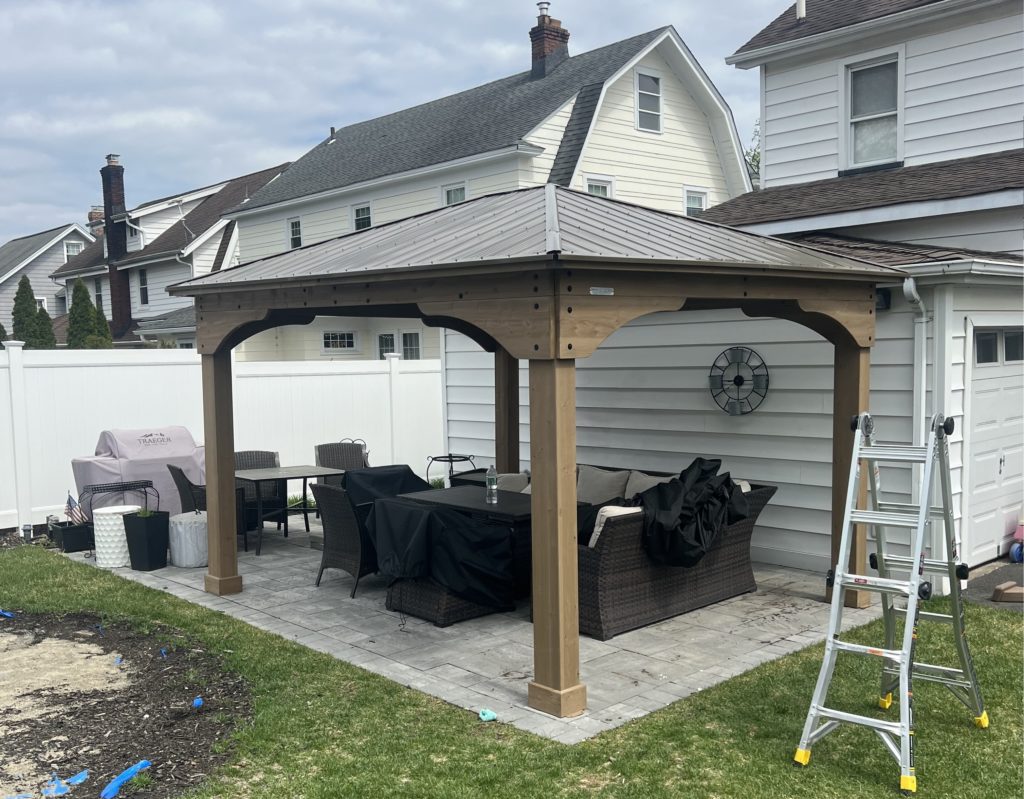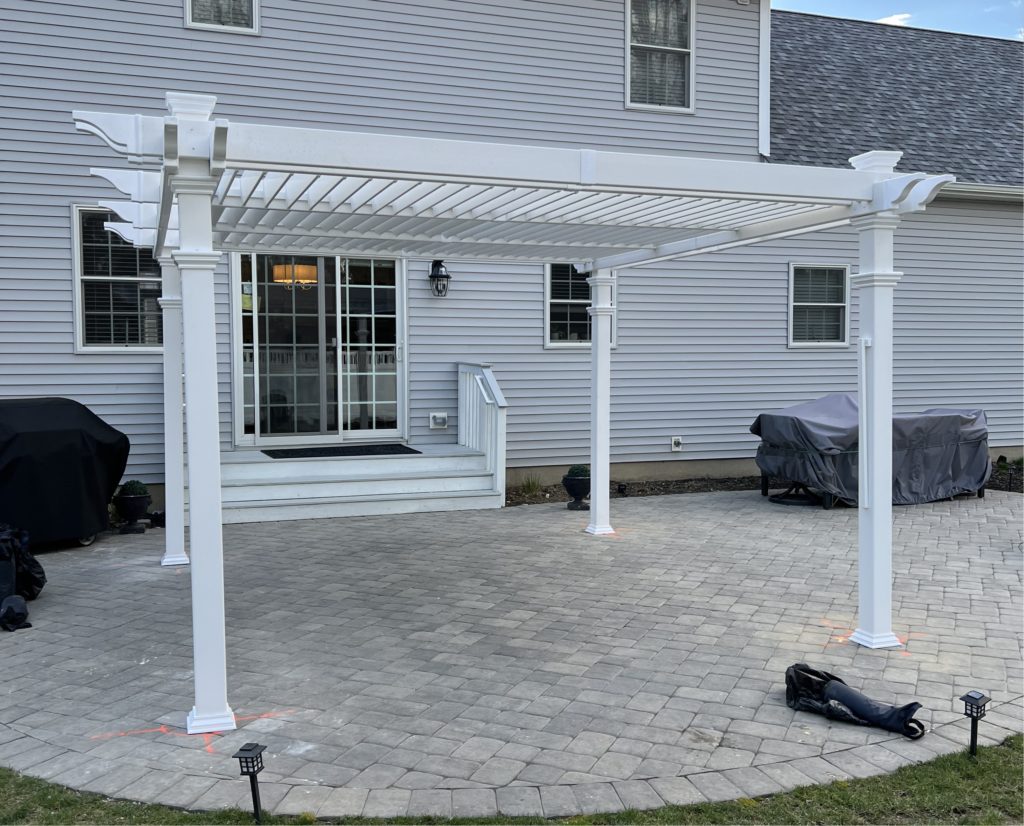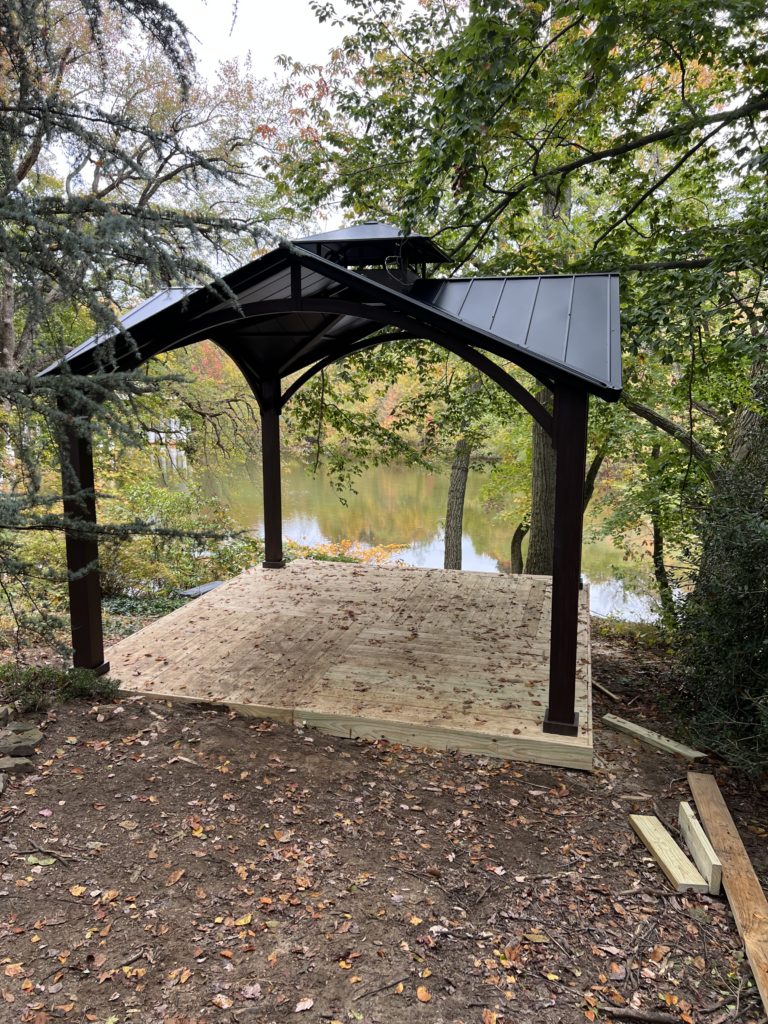Are you looking to enhance the comfort and aesthetic appeal of your home in Merchantville, NJ? One way to achieve this is by installing a ceiling fan. Ceiling fans not only circulate air and offer relief during hot summer days but also serve as a decorative element that can elevate the overall look and feel of your living space. Whether you are considering installing a new ceiling fan, replacing an old one, or need repairs for your existing fan, we’ve got you covered.
OUR CONTACT
Email Support:
info@gazebo-installation.com
Ask your question:
info@gazebo-installation.com
Some of Our Portfolio Gazebo and Pergola Assembly Projects



At our professional ceiling fan installation, replacement, and repair service in Merchantville, NJ, we have a team of experienced technicians who are skilled in handling all types of ceiling fan projects. From selecting the right fan that complements your interior décor to providing seamless installation, our experts will guide you through the entire process, ensuring your complete satisfaction.
Our ceiling fan replacement services are perfect for homeowners who want to upgrade their existing fans or replace faulty ones. With our extensive knowledge of various ceiling fan brands and models, we can help you choose a new fan that not only fits your specific requirements but also offers improved energy efficiency and functionality. Our technicians will uninstall your old fan and install the new one in a timely and professional manner.
In addition to installation and replacement, we also offer ceiling fan repair services in Merchantville, NJ. If your fan is making strange noises, wobbling excessively, or not working at all, our skilled technicians can diagnose and fix the issue promptly. With our knowledge and expertise, we can troubleshoot common problems and restore the functionality of your ceiling fan.
When it comes to ceiling fan installation, replacement, and repair in Merchantville, NJ, trust our reliable and professional team to meet all your needs. Contact us today to schedule an appointment or to learn more about our services.
Ceiling Fan Installation: A Step-by-Step Guide for Merchantville NJ Residents
Installing a ceiling fan can be a great way to improve the comfort, energy efficiency, and aesthetics of your home in Merchantville, NJ. Whether you’re looking to replace an old fan or install a new one, following a step-by-step guide can help you successfully complete the task.
1. Gather the necessary tools and materials before you begin. You will need a ladder, screwdriver, wire cutters, wire nuts, electrical tape, and a ceiling fan kit that includes the fan itself, downrod, mounting bracket, and any additional components.
2. Turn off the power
Before starting any electrical work, it is crucial to turn off the power to the circuit you will be working on. Locate the circuit breaker panel in your home and switch off the corresponding circuit. Use a voltage tester to double-check that there is no power flowing to the wires.
3. Attach the mounting bracket
Start by removing any existing light fixtures or ceiling fans. Locate the ceiling joist or support beam in the desired installation area. Use a stud finder or consult with a professional to ensure a secure and safe installation. Attach the mounting bracket to the ceiling using screws and a screwdriver.
4. Assemble the fan
Follow the manufacturer’s instructions to assemble the ceiling fan. This typically involves attaching the blades to the motor housing, connecting the light fixture (if applicable), and securing all the necessary components.
5. Connect the wiring
Carefully feed the wires from the fan through the downrod and connect them to the corresponding wires in the ceiling using wire nuts. Make sure to match the colors of the wires (black to black, white to white, and green to green or bare copper). Use electrical tape to secure the wire nuts and prevent any loose connections.
6. Attach the fan to the mounting bracket
Lift the ceiling fan and align the mounting screws with the holes in the mounting bracket. Secure the fan to the bracket using screws and a screwdriver. Make sure the fan is properly balanced and not wobbling.
7. Test the fan
Turn the power back on and test the ceiling fan to ensure it is functioning correctly. Check all switches, speeds, and functions, including any light fixtures that may be attached. Make any necessary adjustments or repairs if needed.
By following these step-by-step instructions, Merchantville NJ residents can confidently install a ceiling fan in their homes. However, if you are unsure about any step or encounter any problems, it is always recommended to consult with a professional electrician to ensure a safe and successful installation.
Assessing the Space: Determining the Suitable Location and Required Tools
Before proceeding with the installation, replacement, or repair of a ceiling fan, it is important to assess the space where the fan will be located. This step ensures that the fan is installed correctly and functions optimally. Assessing the space involves determining the suitable location for the ceiling fan and identifying the required tools for the task.
Firstly, choosing the ideal location for the ceiling fan is crucial. It is recommended to select a central area of the room where the fan can provide optimal airflow. The fan should be mounted at a suitable height, typically eight to nine feet above the floor, and should have enough space around it to ensure unobstructed airflow. Additionally, it is important to consider the room’s electrical wiring and existing ceiling support to ensure compatibility and proper installation.
Determining the Suitable Location:
- Select a central area of the room that allows for optimal airflow.
- Mount the fan at a height of eight to nine feet above the floor.
- Ensure there is enough space around the fan for unobstructed airflow.
- Consider the room’s electrical wiring and existing ceiling support for compatibility.
Once the suitable location for the ceiling fan has been determined, it is essential to gather the necessary tools before beginning the installation, replacement, or repair process. The specific tools required may vary depending on the type and complexity of the task at hand. However, some common tools typically needed include a ladder or step stool for accessing the ceiling, a screwdriver or drill for mounting the fan and attaching its components, wire strippers and connectors for electrical connections, and a voltage tester to ensure safety during the process.
Required Tools:
- Ladder or step stool for accessing the ceiling
- Screwdriver or drill for mounting the fan
- Wire strippers and connectors for electrical connections
- Voltage tester for safety purposes
Taking the time to assess the space and determine the suitable location for a ceiling fan, as well as gathering the necessary tools, sets the foundation for a successful installation, replacement, or repair. By ensuring proper placement and having the appropriate tools on hand, individuals can improve the efficiency, functionality, and overall comfort of their living or working spaces.
Preparing the Area: Clearing Obstacles and Ensuring Safety Measures
Before starting any ceiling fan installation, replacement, or repair in Merchantville, NJ, it is essential to properly prepare the area to ensure a safe and smooth process. This involves clearing any obstacles that may hinder the installation or pose a risk to the technicians and residents.
Clearing Obstacles:
Begin by removing any furniture, decorations, or other items from the vicinity of the installation area. Ensuring a clear workspace helps prevent accidents and allows the technicians to work efficiently. Clearing obstacles also provides ample space for tools and equipment required for the installation or repair.
Additionally, it is important to assess the area for any overhead obstructions such as chandeliers or pendant lights. If such obstacles are present, they may need to be temporarily removed or repositioned to facilitate the installation or repair process. This step ensures the safety of both the technicians and the existing fixtures.
Ensuring Safety Measures:
Prior to commencing any work on the ceiling fan, safety measures should be implemented to prevent accidents and injuries. This includes turning off the power to the area at the breaker panel to eliminate the risk of electrical shocks. It is crucial to double-check that the power is indeed turned off before proceeding.
Furthermore, technicians should wear appropriate personal protective equipment (PPE), such as gloves and safety glasses, to minimize the risk of injury. Following safety protocols and guidelines ensures a secure work environment and reduces the likelihood of accidents during the installation, replacement, or repair process.
In conclusion, proper preparation of the installation area is a vital step in ceiling fan installation, replacement, or repair projects in Merchantville, NJ. By clearing obstacles and implementing necessary safety measures, the process can be carried out efficiently and without unnecessary risks.
Wiring and Electrical Connections: Understanding the Process and Ensuring Proper Installation
Proper wiring and electrical connections are essential for the safe and efficient operation of a ceiling fan. Understanding the process and ensuring a proper installation can prevent potential hazards such as electrical shocks or fires. This section will provide an overview of the wiring and electrical connections involved in ceiling fan installation, as well as some important tips to follow.
1. Types of Wiring
There are typically two types of wiring configurations used for ceiling fans: single switch and dual switch. In a single switch setup, a single wall switch controls both the fan and light. On the other hand, a dual switch setup allows for individual control of the fan and light using separate switches.
2. Electrical Connections
The electrical connections for a ceiling fan generally involve connecting the fan’s wires to the corresponding wires in the electrical supply box. These connections are usually made using wire nuts, which securely fasten the wires together. It’s important to carefully match the correct wires based on their colors (typically black, white, and green), following the manufacturer’s instructions and any applicable electrical codes.
Additionally, it’s crucial to ensure that all connections are tight and secure. Loose connections can lead to improper functioning or even electrical hazards. It’s recommended to use electrical tape or other means to further secure the wire nuts and prevent them from coming loose over time.
3. Safety Considerations
When working with electrical connections, it’s essential to prioritize safety. Before starting any installation or repair work, it’s recommended to turn off the power supply to the circuit at the main breaker panel. This will prevent accidental electrical shocks during the process. It’s also advisable to use insulated tools and wear appropriate personal protective equipment, such as gloves and goggles, to further reduce the risk of injury.
Lastly, seeking professional assistance from a licensed electrician is highly recommended, especially for complex wiring installations or repairs. They have the knowledge and expertise to ensure that the ceiling fan’s electrical connections are done correctly and safely.
Conclusion
Understanding the wiring and electrical connections involved in ceiling fan installation is crucial for a successful and safe outcome. By following proper procedures, matching the correct wires, and prioritizing safety, homeowners can enjoy the benefits of a well-functioning and safe ceiling fan. If in doubt, it’s always best to consult with a professional electrician to ensure the job is done correctly.
OUR CONTACT
Email Support:
info@gazebo-installation.com
1126 Falls Terr, Union NJ 07083
Ask your question: info@gazebo-installation.com